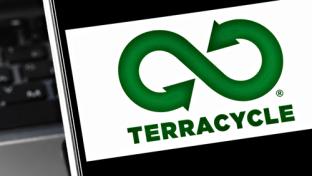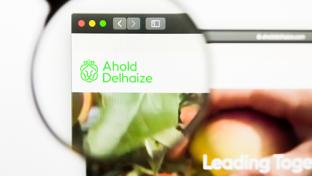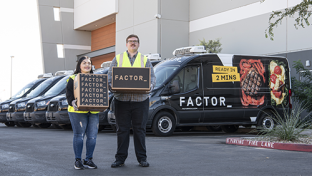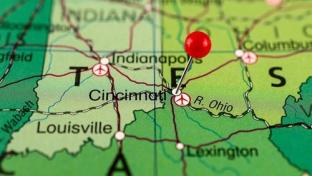The ROI of Supermarket Sustainability
More Sustainability Coverage
For food retailers, the definition of sustainability has evolved rapidly over the past several years. No longer is it merely about transitioning to more environmentally friendly refrigeration systems or reducing refrigerant leaks. Nor is it solely focused on achieving energy-efficiency gains in HVAC, lighting and refrigeration. While these goals are as important as ever, the scope of supermarket sustainability efforts is expanding.
From farm to fork, retailers are considering nearly every aspect of their supply chains as part of their sustainability footprints.
Today’s discerning consumers are increasingly concerned about the food supply chain. They’re seeking organic and natural food products, sustainable packaging materials, and environmentally responsible food-sourcing and -processing practices. They also actively research and seek companies that practice responsible food sourcing. Aligning with these consumer preferences has quickly become a competitive differentiator. What’s more, retaining the loyalty of sustainability-minded customers is increasingly a factor to consider when calculating the return on investment (ROI) of decarbonization.
Many progressively minded retailers are setting short- and long-term net-zero targets that go well beyond consumer considerations. Achieving these goals requires a multifaceted approach that puts retailers in the center of several global environmental megatrends:
- Minimizing greenhouse-gas (GHG) emissions
- Optimizing energy management to reduce energy costs and drive ROI
- Transitioning to lower global-warming potential (GWP) refrigerants and/or phasing down the use of hydrofluorocarbons (HFCs)
- Electrification of transport vehicles and refrigeration
- Integration of renewable energy sources
- Reducing food waste
To help them define their paths to net zero, comply with regulations and drive sustainability initiatives, companies are embracing environmental, social and corporate governance (ESG) commitments within their organizations, typically resulting in a public declaration of their sustainability goals. But with every food retailer having unique targets and priorities, they find themselves at various points along their sustainability journeys.
[Read more: "How Sustainability Has Moved From an Idea to an Imperative"]
This article will examine the key considerations that food retailers can use to evaluate their own progress and chart a course for achieving short- and long-term sustainability goals.
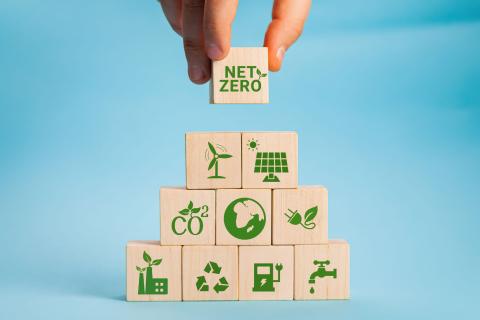
Defining the Scope of Emissions and Sustainability Targets
Global climate initiatives such as the Paris Climate Accord have set 2050 as the year when countries, institutions and companies should strive to achieve net zero. Already, some food retailers are pledging to meet even more aggressive net-zero timelines, such as 2040.
Net zero simply means consuming only as much energy as is produced — balancing the reduction of GHG emissions with carbon-offset strategies to achieve a carbon-neutral operating footprint. Since the path to net zero will be different for every retailer, the Environmental Protection Agency (EPA) recommends using science-based targets as a common framework to help them set and meet their sustainability goals. Understanding the full extent of corporate GHG emissions requires taking a holistic view that’s categorized within three primary sources. Scopes 1 and 2 refer to GHG emissions originating from a company’s own operational footprint, while Scope 3 expands the scope to the company’s larger supply chains.
Scope 1
Scope 1 refers to direct GHG emissions, such as those originating from refrigerant-based commercial refrigeration and HVAC equipment in retail stores and storage and distribution facilities. Minimizing refrigerant leaks and making the transition from high-GWP refrigerants to lower-GWP alternatives fall under Scope 1. Most retailers are making these top priorities.
The direct emissions from fuel combustion in boiler furnaces and fleet vehicles are also part of Scope 1 sustainability efforts. These will require retailers to transition to electric transport vehicles and electrify shipping container refrigeration as part of their longer-term net-zero efforts.
Scope 2
Scope 2 encompasses indirect GHG emissions from all sources of energy consumption, including refrigeration, HVAC and lighting. Reducing energy consumption in the face of rising energy costs also provides an opportunity to claim a substantial ROI along the path to net zero. Supermarkets are committing to multiple strategies to reduce indirect GHG emissions:
- Installing LED lighting
- Leveraging advanced energy management controls and tools to enable grid-interactive optimization
- Integrating wind, solar and other locally generated renewable energy sources
- Retrofitting equipment to minimize energy consumption and maximize performance with variable frequency drives (VFDs) and other capacity modulation strategies
Scope 3
Scope 3 emissions are among the most challenging to identify and control, as they include direct and indirect emissions from all producers and providers within a company’s supply chain, including emissions occurring after goods are sold, throughout product lifecycles and, ultimately, disposal. Among the many focus areas within this scope are:
- Electrification of third-party logistics (3PL) and transportation companies
- Sourcing eco-friendly packaging materials for house brands
- Implementing more sustainable sourcing practices
Retailers that have embarked upon their sustainability journeys have acknowledged that GHG emissions within Scopes 1 and 2 are much easier to abate, because they’re often within the retailers’ realm of control.

Food Waste Reduction
The goal of reducing food waste has become a key pillar in many retailers’ sustainability efforts. According to the Zero Waste International Alliance (ZWIA), zero food waste is defined as follows: “The conservation of all resources by means of responsible production, consumption, reuse and recovery of products, packaging and materials without burning and with no discharges to land, water or air that threaten the environment or human health.”
Industry leaders are already committing to achieving the Zero Food Waste Certification as defined by ZWIA, prioritizing efforts to identify, track and prevent sources of waste. Others are committed to eliminating the food waste sent to landfills by 2030. Tracking the temperatures of perishable food in storage and on the move is critically important to achieving these goals.
Strategies for Meeting Retail Sustainability Goals
Various tools and capabilities are available to help retailers along their paths to net zero. For instance, over the past decade and longer, research efforts have led to new eco-friendly, energy-efficient refrigeration technologies designed to reduce both Scope 1 and 2 GHG emissions.
A range of solutions is being developed using next-generation, lower-GWP refrigerants — such as CO2, R-290 and emerging A2Ls — to deliver GHG emission reductions. These include:
- Centralized CO2 transcritical booster (TCB) compression for large supermarkets
- Refrigeration and case controls optimized for lower-GWP alternatives
- Advanced leak detection capabilities to minimize direct emissions and maximize performance and safety
Retailers are also leveraging advanced supervisory control systems and expert energy management strategies to bring critical facility energy consumption under centralized control. These advanced controls can be used to:
- Reduce peak facility loads via smart optimization techniques and machine-learning algorithms
- Coordinate with local utilities to reduce grid loads and incentivize energy-efficient operations
- Enable enterprise-wide monitoring of store fleets to drive proactive maintenance programs and prioritize store upgrades
Further, researchers continue to build upon industry-leading compression technologies to improve energy efficiencies in new installations and retrofit refrigeration systems in the following ways:
- Enabling the use of variable-capacity modulation techniques via digital compression technologies and VFDs
- Providing industry-leading energy efficiencies that help retailers qualify for utility rebates and incentives
Additionally, to help preserve perishable food quality throughout the cold chain, many leading retailers and producers rely on cargo-tracking and -monitoring devices and software. These technologies provide stakeholders with live access to shipment temperature and locations, alerts, and notifications of excursions to help keep in-transit perishable food safe and fresh.
Next Steps
Regardless of your company’s current progress on its path to net zero, a variety of alternatives is available to help you take the next steps and define a strategy to meet your short- and long-term sustainability targets. With expert guidance and proven sustainability solutions that already exist, you can reduce GHG emissions in nearly every aspect of your operations — and do so in a way that’s likely to help your business thrive.



